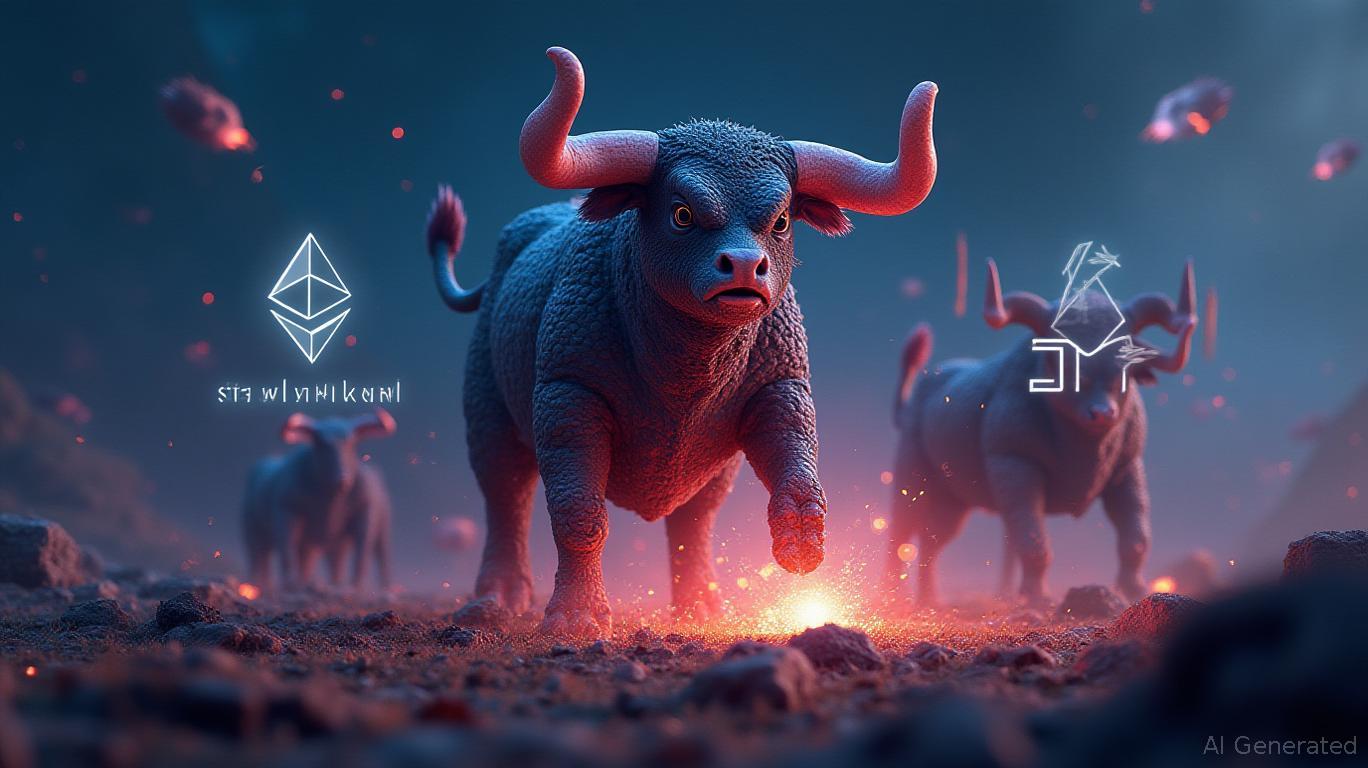NYC Mayoral Election: The Role of Prediction Markets Sparks Discussion Among Democrats
- Zohran Mamdani, NYC mayoral race frontrunner, holds 93-95% victory odds via prediction markets, backed by Obama but facing intra-party concerns over his progressive policies. - His affordability-focused platform—rent freezes, free transit, wealth taxes—energizes progressives while drawing Republican attacks and fears of emboldening conservatives. - Prediction markets ($397M traded) now shape public discourse, with critics warning they blur financial speculation and democratic debate through viral social
Zohran Mamdani, the leading Democratic candidate in New York City's mayoral contest, is far ahead in both polling and betting markets, with Kalshi and Polymarket giving him a 93% and 95% likelihood of winning, respectively, as of November 3, according to
Mamdani’s campaign, which focuses on affordability and redistributing wealth, has energized progressives in the city. His plans—such as freezing rents on stabilized apartments, making public transit free, and imposing a 2% tax on incomes above $1 million—have sparked both support and criticism. Although Obama stopped short of a formal endorsement during their November 1 conversation, he commended Mamdani’s “remarkable” campaign and offered to be a “sounding board” if Mamdani is elected, according to a

After losing the primary, Cuomo is running as an independent, presenting himself as a moderate choice. The latest polls show Mamdani with a strong lead, with Quinnipiac University putting him at 43% compared to Cuomo’s 33%, and Republican Curtis Sliwa at 14%, according to
The mayoral race has also highlighted the rapid rise of prediction markets. On Polymarket, where users can trade on election results using cryptocurrency, $397 million has been traded on this race alone, with over $123 million bet on Mamdani’s success, according to
Some critics warn that these platforms may blur the line between financial speculation and genuine public sentiment, potentially distorting democratic debate. Analysts observe that viral market updates on social media can reinforce certain narratives, sometimes creating self-fulfilling prophecies as both traders and voters respond to changing odds, as noted in the Forbes analysis. “Prediction markets weren’t intended to sway elections,” one observer remarked, “but when millions are wagered, the distinction between information and influence becomes unclear.”
With nearly 735,000 early votes already cast—exceeding the total from 2021—Mamdani’s grassroots movement seems set to benefit from high turnout among young and progressive voters. If elected, he would become New York’s first Muslim mayor and the city’s second-youngest ever, according to Newsweek. However, the implications go beyond City Hall: a Mamdani victory could challenge the Democratic Party’s ability to balance progressive momentum with national strategy, while a rare three-way finish would reflect shifting trends in urban politics.
As the campaign enters its final hours, the interaction between prediction markets, campaign messaging, and voter decisions highlights a new phase in electoral politics—one where anticipation and speculation play an ever-greater role in shaping outcomes.
Disclaimer: The content of this article solely reflects the author's opinion and does not represent the platform in any capacity. This article is not intended to serve as a reference for making investment decisions.
You may also like
Ethereum Updates Today: The Latest Crypto Competition: BullZilla's Meme Frenzy Puts Ethereum's Reputation to the Test as Solana Advances
- BullZilla ($BZIL) surges 2,381% in October 2025, outperforming Ethereum and Solana amid crypto market realignment. - Ethereum drops 2.45% as ETF outflows and rising Treasury yields pressure its short-term price despite strong DeFi infrastructure. - Solana gains momentum with $200M ETF inflows and developer growth, challenging Ethereum's Layer 1 dominance through superior scalability. - BullZilla's presale model, 24-stage burn mechanism, and projected 2,381% ROI attract 3,300 holders amid Q4 volatility an

Ethereum Updates: HyperUnit's $55 Million Crypto Wagers Withstand $1.1 Billion Liquidation Surge
- Ethereum fell below $3,400 on Nov 4, 2025, marking its first annual negative performance since 2025, while Bitcoin neared $100,000 support. - A $110M Balancer hack and Fed Chair Powell's hawkish comments triggered $1.1B in crypto liquidations, wiping out 303,000 traders' positions. - Whale HyperUnit defied the selloff by buying $37M Bitcoin and $18M Ethereum, contrasting with the Crypto Fear & Greed Index hitting 21. - Analysts debate Ethereum's $3,000 support and Bitcoin's $106,600 level, with market st

The United States Cracks Down on North Korea's Cryptocurrency Assets Supporting Nuclear Arms Development
- U.S. Treasury sanctions 8 North Korean individuals/entities for laundering $2B+ in stolen crypto to fund nuclear programs. - Targets include state bankers, IT firms, and banks using mixers/shell companies to evade sanctions via China/Russia intermediaries. - Cyber-enabled theft by North Korea reached $3B in 3 years, exploiting AI hacking tools and social engineering attacks on crypto exchanges. - Sanctions aim to disrupt DPRK's ability to convert stolen crypto into hard currency, a critical lifeline for

As High-End Goods Grow Out of Reach, Cost-Conscious Consumers Make Luxury Style Accessible to All
- "Ralph Lauren Christmas" trend blends 90s luxury aesthetics with budget-friendly DIY, driven by Gen Z and cost-conscious shoppers amid inflation. - Etsy/TikTok searches for the trend surged 180-600%, as consumers replicate plaid/velvet decor via thrift stores and discount retailers. - Economic pressures see 2025 holiday spending down 10% to $1,595, while tariffs add $132 average costs per shopper, per Deloitte/LendingTree. - Ralph Lauren's Q3 2025 revenue rose 13.7% to $3.77/share, with institutional inv
